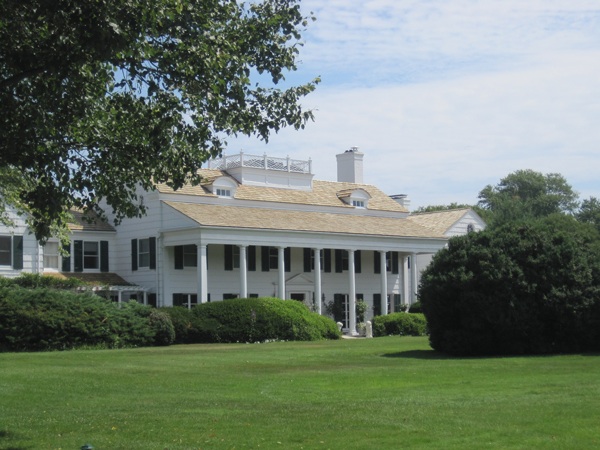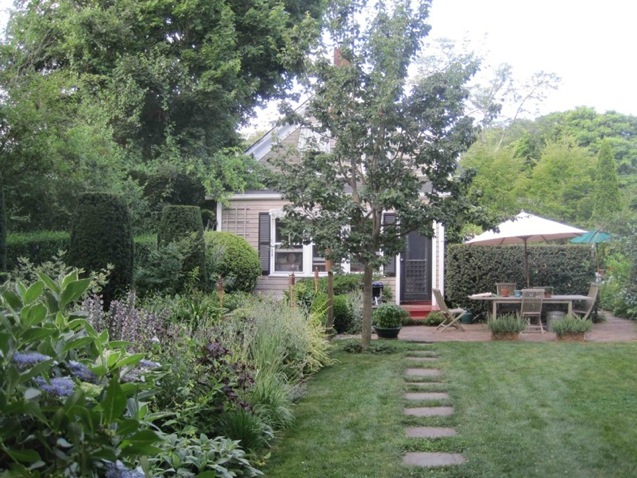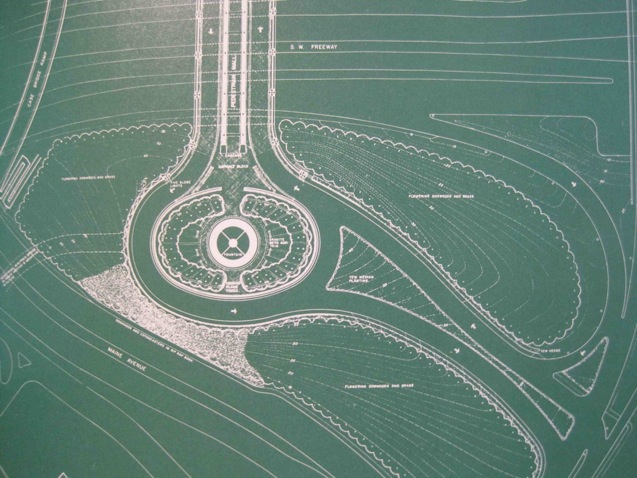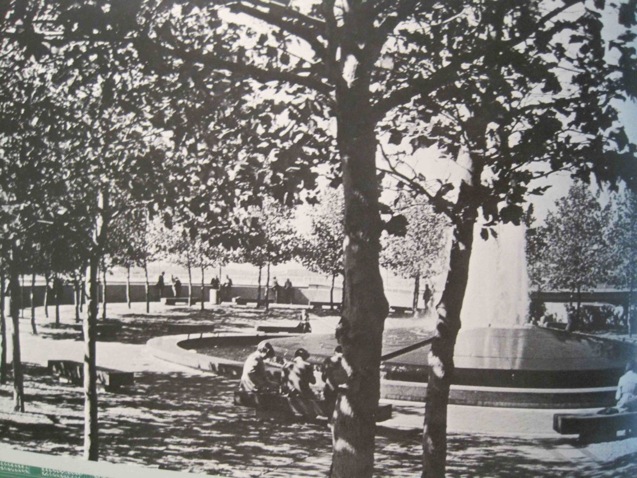Overdevelopment is doing to cultural landscapes what excessive plastic surgery has done to... well, I won't name names. But I will say after spending two weeks in the Hamptons, I can point to egregious examples of both.
OK, that was a gratuitous opener, but there's a method to my finger pointing.
I did just spend two wonderful weeks at a charming saltbox house in Amagansett, thanks to my great friend Tom Cody. As was the case last year, Tom's home was both a vacation spot and base of operations for visiting gardens in the Hamptons. The handful of towns on this bucolic part of Long Island's East End, with quaint street names like Hither Lane and Further Lane, were first settled in the mid-1600's and into the last century were still very agrarian. There remain some farms and centuries old homes, but there has been a lot of development in the past 30 years, some of it sympathetic (the Whitefield Condominiums in Southampton), some not (that 100,000-square-foot behemoth on Daniels Lane). That said, the Hamptons retain a distinct character.
But for how long?

Whitefield Condominiums, image courtesy The Cultural Landscape Foundation
The New York Times recently ran an article about 81-year old Evelyn Konrad, who is asking that very question. She got a law degree in her 70s and now is taking on village officials, builders and homebuyers, suggesting that the size of many of the new Southampton homes violates local laws. Sally Spanburgh, a local architect and blogger quoted in the article, succinctly contextualizes the issue: "it's about community and connectedness, and I think that Evelyn has shown us that we can lose all that."
Konrad was very much on my mind as I visited several friends and their gardens... and saw what was happening in their neighborhoods. Carole and Alex Rosenberg in Watermill have an early (1980's) and beautiful "New American Garden" by James van Sweden and Wolfgang Oehme. And right next door, looming visibly over a tall hedge, huge new residential construction.

Rosenberg Garden, image courtesy the Cultural Landscape Foundation
Over in Sag Harbor, garden historian Mac Griswold has a charming home with an artfully rambunctious garden. Homes on her block, which average 1,200 square feet, will soon be dwarfed by a 19-unit luxury condo project at the end of the street.

Griswold garden, image courtesy The Cultural Landscape Foundation
Spurred by Konrad's quest, I asked friends and colleagues the following: Can't something be done to reverse this trend? Why is there such acceptance and complacency and not a willingness to act? How do we place a value on the collective cultural landscape of the Hamptons and make it visible to the public? When does the accumulated loss of community character: sky, horizon line, unpaved roads, hedgerows, not to mention the loss of open space as agriculture (e.g. potato fields, orchards) reach the tipping point? To borrow from the global warming discussion, how many more ice caps have to melt before the threat is real?
The issue re-surfaced the other day in Washington Post culture critic Philip Kennicott's article about four sites on or near the National Mall for a proposed museum Congress would seem to have addressed the tipping point issue in 2003 legislation that deemed the Mall "a substantially completed work of civic art." Kennicott concurs and suggests an alternate site -- a park several blocks from the Mall labeled "a forgotten spur of 10th Street SW." At no time does the article say that the 10th Street Overlook park was designed by Presidential Medal of Arts recipient, landscape architect Dan Kiley. Not a minor figure. In fact, Frederick Law Olmsted is the only person with more works of landscape architecture designated as National Historic Landmarks. Kiley's other projects in the region include Hollin Hills (1949), Capitol Parks Apartments (1956), Dulles Airport (1963), the pilot block for the Pennsylvania Avenue redevelopment (1968) and the National Gallery of Art East Building (1978). However, I think nothing equals the power and simplicity of the Overlook's central, low-slung, cone shaped fountain that sends a surge of water more than 30 feet in the air.

10th Street Overlook, image courtesy The Cultural Landscape Foundation

10th Street Overlook, image courtesy The Cultural Landscape Foundation
My thoughts returned to Konrad, unsympathetic development, the Hamptons and Spanburgh's remark about "community and connectedness." Recognizing that the proposed Overlook site is the work of a master landscape architect, how does its potential demolition inform site selection for the new museum? Is this the best and only alternative to keep new construction off the Mall?
As long as our cultural landscapes remain invisible, and we don't apply methods for assigning their value, we can expect more landscapes to serve as sacrificial lambs for new building construction - from the open pastoral scenery of the Hamptons to the shared civic landscape of our nation's capital.
Like the ice caps, when they're gone, they're gone.
